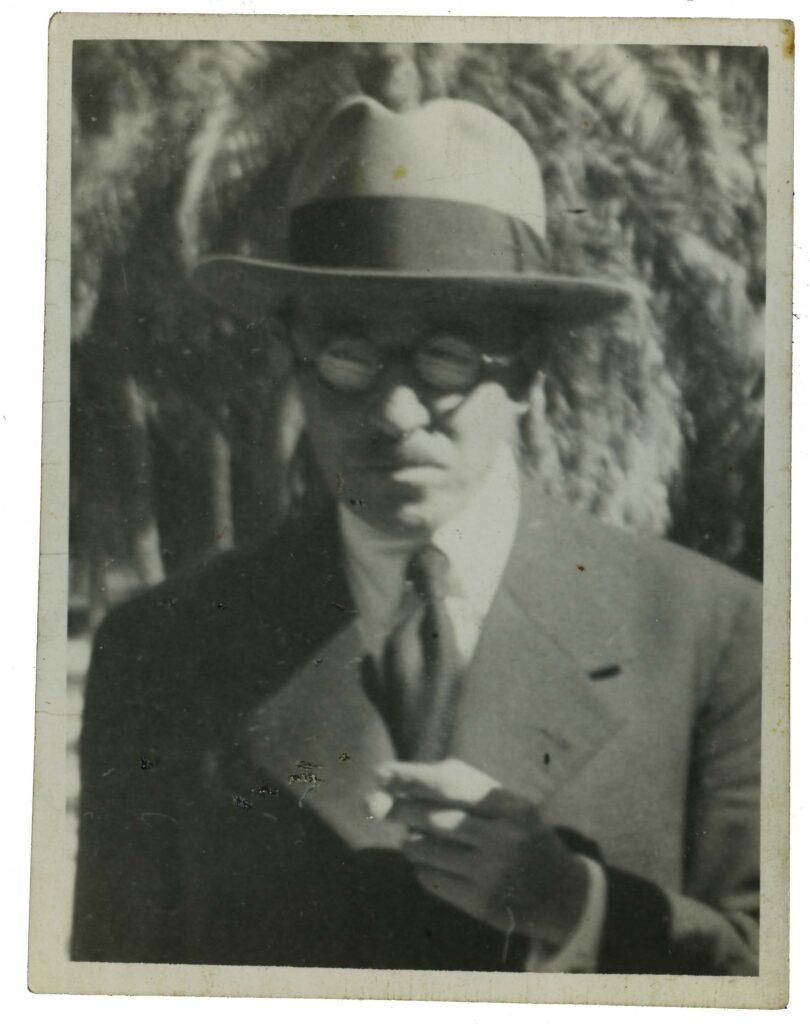One of Tarik Kiswanson’s newest sculptures, Nest (2022), is an ovoid fiberglass resin form, larger than a human, its shape reminiscent of eggs and cocoons, and also seeds; Kiswanson notes that the Greek roots of the word “diaspora” come from spreading seeds. Especially as a polyglot—he speaks Swedish, Arabic, English, French, and Italian—the artist likes having, as he puts it, “something so dense or layered that it produces things outside of your body and boundary.”
Kiswanson was born in Halmstad, Sweden, in 1986, to Palestinian parents. When his father arrived from Jerusalem in 1979, he was one of only a handful of Arabs in the city, and the Swedish administration naturalized their original surname, Al Kiswani, to the chimeric Kiswanson. He grew up not in the posh part of the city where rich Swedes have summer houses, but in the housing projects along with other second-generation immigrants from places including the former Yugoslavia, Vietnam, and Iraq. The Paris-based Kiswanson finds it annoying when people assume he is a refugee because of his Palestinian heritage, because the exiling happened before he was born. He said he is “moving between these realms of cultures, identities, languages and the enormous anxiety I feel when I don’t fit into society’s black and white.”
Kiswanson’s earlier works centered on his family, “to understand who I was, where I was coming from,” he said. “To understand I don’t really come from anywhere.” One example, Grandfather’s Cabinet (2014), is a skeletal reconstruction of his grandfather’s filing cabinet, which his family took with them when they fled Jerusalem. Kiswanson re-created the shape using strips of brass, between which he poured silver melted down from family heirlooms (such as a spoon and a necklace) to seal the strips together. “All of my family history is embedded in the seams,” he said.
Tarik Kiswanson: The Fall, 2020.
Later, he began focusing on the experience of fellow second-generation immigrants, collaborating with preteen youths whose parents had likewise emigrated. In the film The Fall (2020), a boy named Mehdi, who was born in Belgium to Moroccan parents, plays with a pencil until it drops, then tilts his chair back until it too falls to the ground. The whole sequence was shot on a Phantom camera, which can record thousands of frames a second, and is slowed down throughout to keep Mehdi suspended in the state of instability; it cuts out and re-loops just before Mehdi’s head hits the ground, such that he doesn’t have time to be afraid, even though he knew before filming that it would hurt. This in-between state, which Kiswanson called the “floating condition of existing, detached and removed from one’s own heritage, culture, country, family,” is where he likes to work. That is partly why he has more recently moved into abstraction, as it’s not specific to any culture or time.
This is a busy year for the artist. Solo exhibitions opened at Museo Tamayo in Mexico City and Bonniers Konsthall in Stockholm in April. Another will open at Salzburger Kunstverein in Austria in July, as will a group show at the Centre Pompidou in Paris next fall, featuring Kiswanson as a finalist for the Prix Marcel Duchamp. Even as he enjoys his success, he feels it hard-won, after years of waiting for the art world to catch up with the fuzzy way he presents identity in his art.






